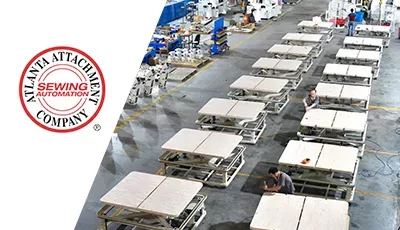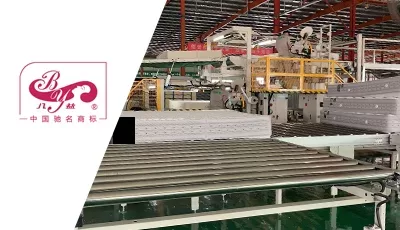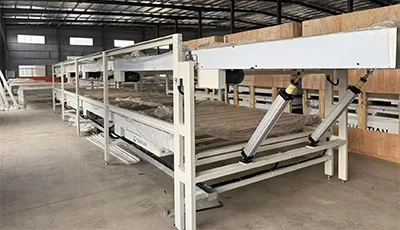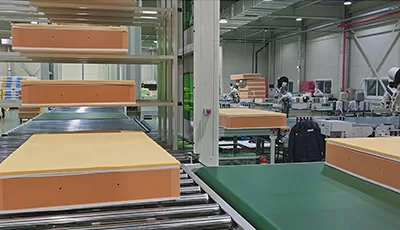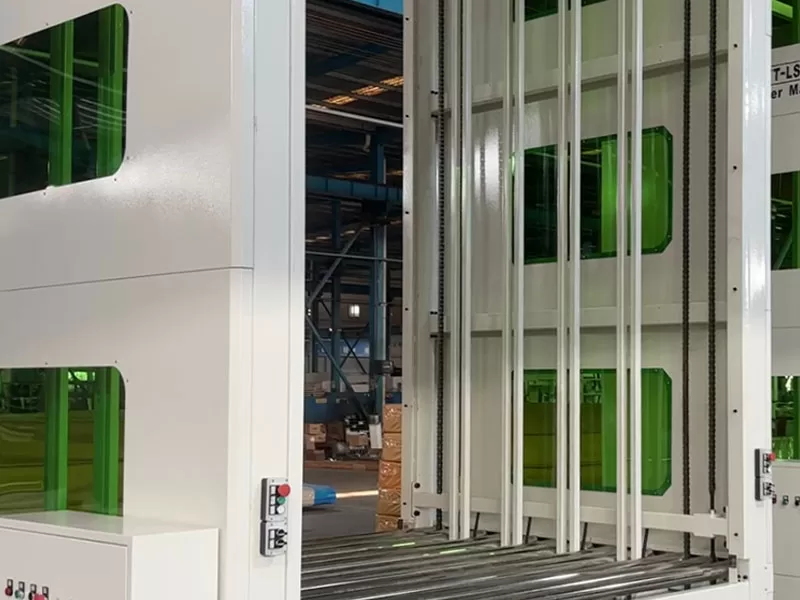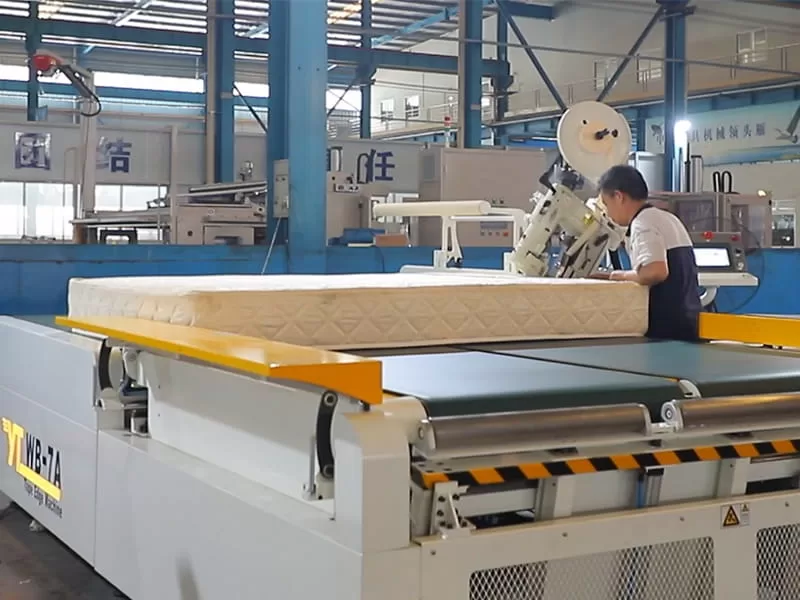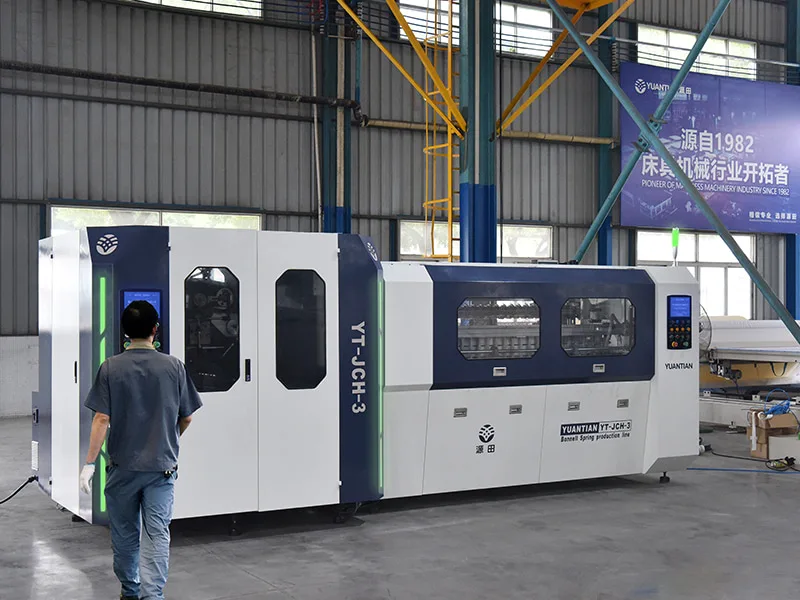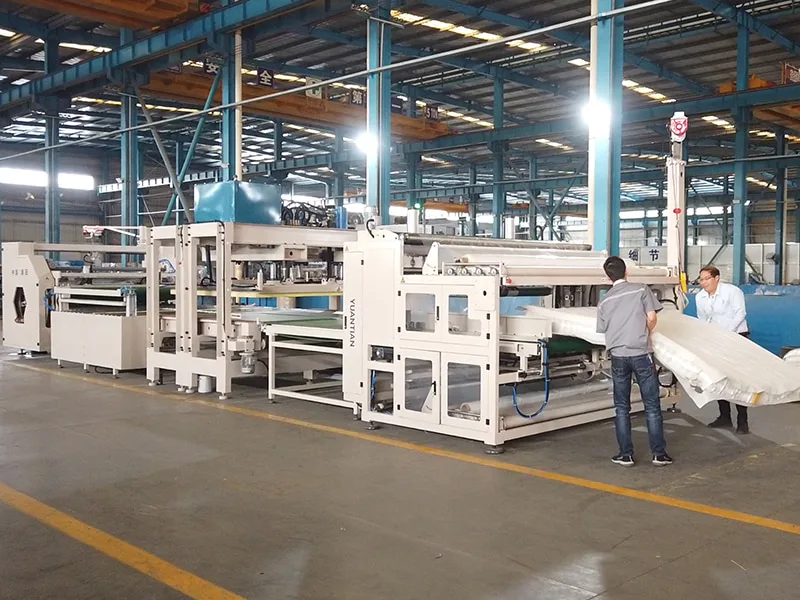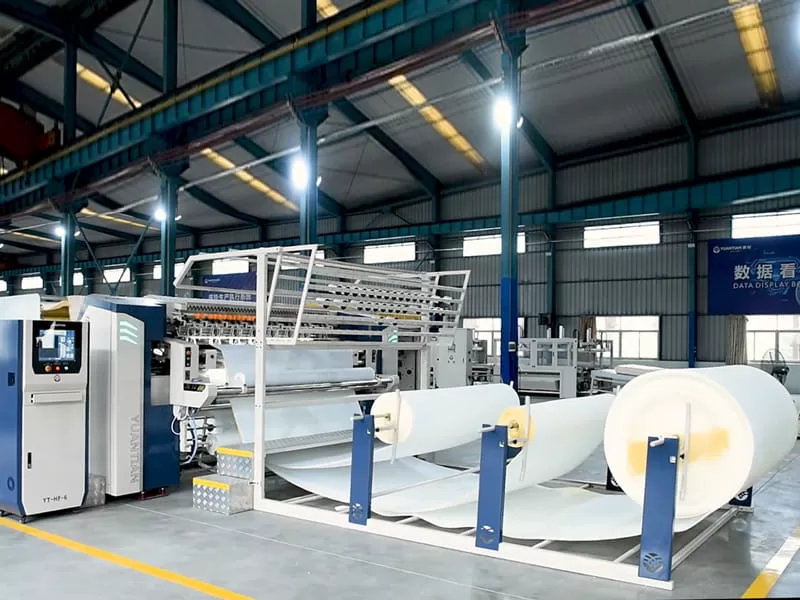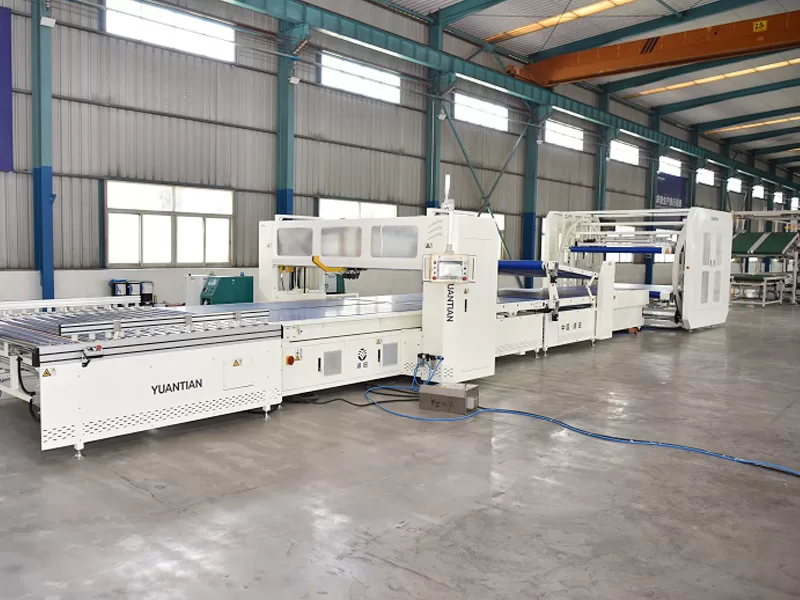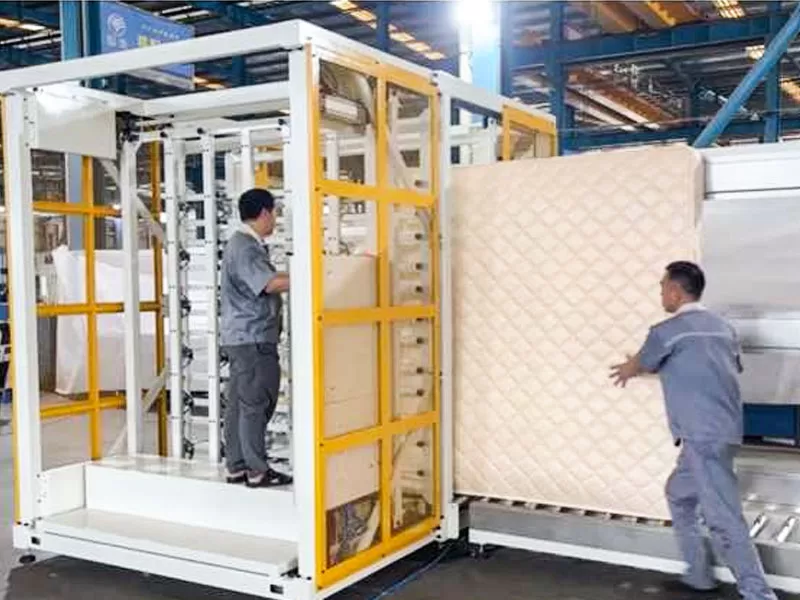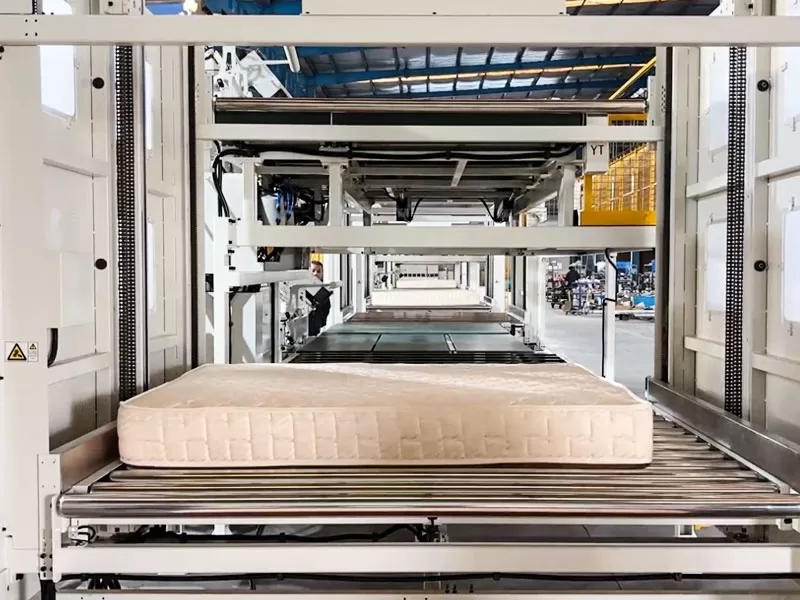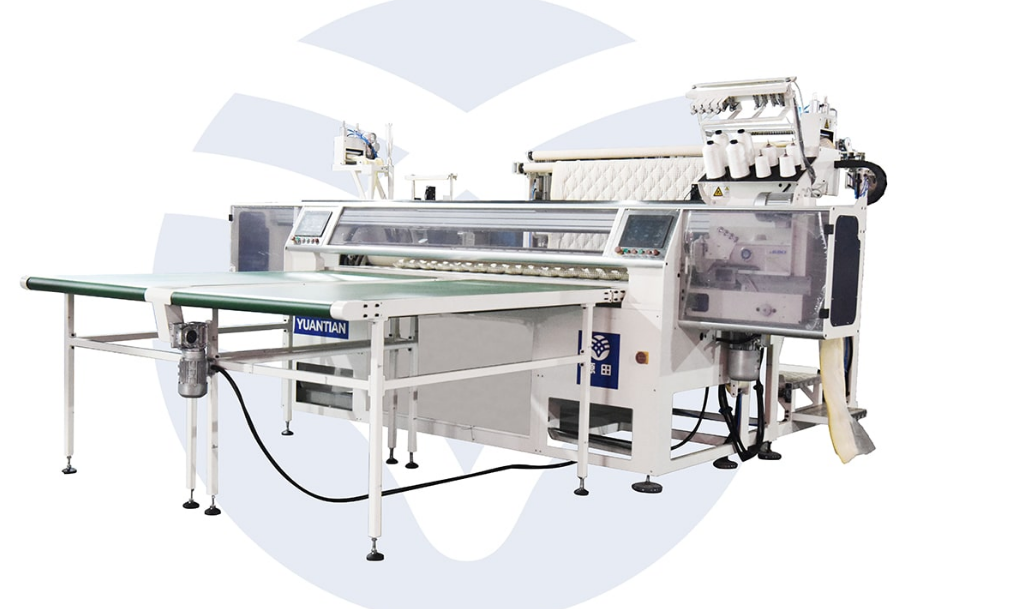
Origins of Fabric Quilting Machines: From Handmade Quilts To Mass Production
The history of fabric quilting machines is a story of innovation and progress that spans centuries. Quilting is the process of sewing two or more layers of fabric together to create a thicker padded material. The earliest quilts were made by hand, but as technology advanced, quilting machines were developed to speed up the process and increase production.The first quilting machines were invented in the early 1800s. These machines were powered by foot pedals and had a single needle that was used to sew the quilt layers together. However, these machines were not widely used due to their limited capabilities. In the late 1800s, the first rotary quilting machine was invented. This machine had multiple needles that could sew multiple layers of fabric together simultaneously, greatly increasing production speed. This machine was still powered by foot pedals, but it was a significant improvement over earlier models.
In the early 1900s, electric-powered quilting machines were introduced. These machines were faster and more efficient than their manual counterparts and were widely adopted by manufacturers. However, they were still limited in their capabilities and were primarily used for straight-line quilting. In the 1950s, the development of computerized quilting machines revolutionized the industry. These machines were capable of stitching complex patterns and designs, allowing for a greater range of customization in quilted fabrics. Computerized quilting machines have continued to evolve, with modern machines able to produce intricate designs with high precision and accuracy. Today, fabric quilting machines are an essential part of the textile industry, used to produce a variety of products such as bedding, upholstery, and apparel. They come in various sizes and configurations, from small machines for home use to large industrial machines capable of quilting fabrics on a massive scale.
Fabric quilting machines play a critical role in the mattress market, as they are used to produce quilted fabrics that are commonly used in mattresses. quilted fabrics are an essential component of mattresses, as they provide additional comfort, durability, and support to the sleep surface. In this essay, we will discuss the significance of fabric quilting machines in the mattress market and their impact on mattress production. For one thing, using fabric quilting machines in the mattress market is that they enable mattress manufacturers to produce high-quality, customized quilted fabrics efficiently. quilting machines can produce a wide range of stitch patterns, including simple straight lines, diamond shapes, and complex patterns, which can add aesthetic appeal to the mattress. By using quilting machines, mattress manufacturers can customize the quilting patterns and create unique designs that set their mattresses apart from the competition.
Definitely, fabric quilting machines can help improve the overall quality and durability of the mattress. Quilted fabrics provide additional support and comfort to the sleep surface, which can help reduce pressure points and improve sleep quality. In addition, quilted fabrics can help prevent mattress sagging and improve the mattress’s lifespan. Moreover, quilting machines offer increased efficiency in the mattress production process, which translates into reduced production costs and higher profitability for mattress manufacturers. Fabric quilting machines can quilt a large amount of fabric at a faster rate, which reduces the time required for the quilting process. As a result, mattress manufacturers can increase their production capacity and improve their overall efficiency.
Four Main Types of Fabric Quilting Machines
Fabric quilting machines are an essential tool used in the textile industry to produce high-quality, customized quilted fabrics. These machines come in various types and sizes, and they can produce different stitch patterns and designs. Currently, There are four main types of quilting machines, including the manual machine, semi-automatic machine, automatic machine, and computerized machine. Quilting machines are an essential tool used in the textile industry to produce high-quality, customized quilted fabrics. There are four main types of quilting machines available in the market, each with its unique features and benefits.
-
Manual Quilting Machines
Manual quilting machines are the oldest type of quilting machines, and they are still in use today. These machines require a lot of manual labor, as the operator must move the fabric manually through the machine. The machine’s needle and shuttle mechanism sew the fabric layers together, producing the quilted pattern. The manual quilting machines are also generally small and lightweight, making them easy to move around. They are also affordable and straightforward to operate, making them an excellent choice for small businesses and hobbyists. However, manual quilting machines are slow and labor-intensive, making them unsuitable for large-scale production.
-
Semi-Automatic Quilting Machines
Semi-automatic quilting machines are an improvement over manual machines. They have a mechanism that moves the fabric through the machine, reducing the operator’s manual labor. The operator still needs to guide the fabric through the machine, but the mechanical mechanism helps to reduce the workload. Besides, Semi-automatic quilting machines are faster than manual machines and can produce more significant volumes of quilted fabrics. They are also more precise than manual machines, producing even stitch patterns. However, they are still limited in terms of speed and efficiency, making them unsuitable for large-scale production.
-
Automatic Quilting Machines
Automatic quilting machines are a significant improvement over manual and semi-automatic machines. These machines use a computerized system to control the fabric’s movement and stitching pattern. The operator sets the desired stitch pattern, and the machine does the rest. They are fast and efficient, producing large volumes of quilted fabrics in a short amount of time. They are also more accurate than manual and semi-automatic machines, producing even stitch patterns consistently. Additionally, automatic quilting machines are highly customizable, allowing operators to create a wide range of quilted fabrics with different stitch patterns and designs.
-
Computerized Quilting Machines
Computerized quilting machines are the most advanced type of quilting machines. These machines use computer software to control all aspects of the quilting process, from fabric movement to stitch pattern selection. The operator sets the desired stitch pattern and other parameters, and the machine does the rest. Yuantian computerized quilting machines are the fastest and most efficient type of quilting machines, producing large volumes of high-quality quilted fabrics in a short amount of time. They are also highly customizable, allowing operators to create unique stitch patterns and designs. Additionally, computerized quilting machines can integrate with other computerized systems, such as design software and automated cutting machines, to produce complex quilted fabrics with ease.
How Does The Fabric Quilting Machine Work ?
Generally Speaking, fabric quilting machines are used to produce various products such as clothing, bedding, and upholstery. Fabric quilting machines work by sewing together multiple layers of fabric with a batting or filling in between to create a quilted fabric. The machine uses a needle and thread to stitch the layers together in a specific pattern, creating the desired quilted effect. The fabric layers are loaded onto the machine’s rollers, which move the fabric through the machine. The batting or filling is placed between the layers of fabric before they are fed into the machine. The needle and thread pass through the layers of fabric and batting, stitching them together in a specific pattern.
The quilting pattern can be pre-programmed into the machine or set manually by the operator. The machine can create a variety of stitch patterns, including straight stitches, zigzag stitches, and decorative stitches. The machine’s speed can also be adjusted to create different stitch densities and patterns. Fabric cutting machine for quilting can be operated manually, semi-automatically, or fully automatically. Manual machines require the operator to move the fabric manually through the machine, while automatic machines use computer software to control the fabric’s movement and stitching pattern. Semi-automatic machines are a hybrid of manual and automatic machines, using a mechanical mechanism to move the fabric through the machine while the operator guides the fabric’s direction. Besides, fabric roll cutting machine is another piece of equipment used to cut fabric rolls into smaller sections or pieces. It is a versatile tool commonly used in textile industries for cutting fabric materials like cotton, silk, wool, and other fabrics. This type of machine can cut multiple layers of fabric simultaneously, which makes it ideal for industrial-scale cutting applications.
The machine typically consists of a motorized roller or feed mechanism that moves the fabric forward towards a cutting blade. The cutting blade is typically a circular blade or a straight knife blade. Some machines also have a laser cutting feature for cutting more intricate patterns and designs. The cutting process starts with the operator loading the fabric onto the machine. The operator then sets the desired length of the fabric to be cut and adjusts the blade’s position accordingly. The fabric is then fed through the machine, and the blade cuts it into the desired length or shape. The machine’s cutting speed and accuracy depend on the type of blade used, the cutting angle, and the cutting force. The fabric roll cutting machine is the ability to cut fabric in bulk, which saves time and effort. It also ensures that the cuts are uniform and precise, making it ideal for creating high-quality finished products. The machine’s versatility allows it to cut different fabrics, making it a useful tool in textile industries.
Common Fabric Quilting Machine Problems
Yuantian’s fabric quilting machines are essential for producing high-quality mattresses efficiently. However, they can experience several problems, such as skipping stitches, tension issues, jammed machines, uneven stitching, thread breakage, and fabric feed problems. By regularly inspecting and maintaining your fabric quilting machine, you can minimize the occurrence of these problems and ensure your machine operates efficiently and effectively. and any issues with them can cause significant delays and disruptions. Here are some common fabric quilting machine problems and how to fix them:
-
Skipping Stitches: If your fabric quilting machine is skipping stitches, the most likely cause is a dull needle or improper needle alignment. To fix this issue, replace the needle and make sure it is correctly aligned.
-
Tension Problems: Tension issues can cause the thread to break or produce inconsistent stitching. Make sure the thread tension is correctly set according to the manufacturer’s instructions, and check for any obstructions or tangles in the thread path.
-
Jammed Machine: A jammed machine can occur due to a build-up of thread, debris, or fabric. To fix this issue, clean the machine thoroughly, remove any obstructions, and make sure the fabric is correctly loaded and positioned.
-
Uneven Stitching: Uneven stitching can be caused by a variety of factors, including thread tension, needle alignment, or a warped machine frame. Check the machine’s frame for any warping and ensure the needle is correctly aligned and the thread tension is correctly set.
-
Thread Breakage: Thread breakage can occur due to a variety of reasons, including improper thread tension, dull needles, or using low-quality thread. Make sure the thread tension is correctly set, replace any dull needles, and use high-quality thread.
-
Fabric Feed Problems: Fabric feed problems can cause the fabric to bunch or shift during quilting, resulting in uneven stitching. Check the fabric feed system for any obstructions or misalignments, and adjust the fabric feed accordingly.
Fabric quilting machines can produce quilted fabrics faster and with higher precision than traditional quilting methods. This increased efficiency can help mattress manufacturers increase their production capacity and reduce lead times, resulting in more significant profits. Besides, they allow for more intricate and customizable designs than traditional quilting methods. This customization capability allows mattress manufacturers to create unique products that stand out in the market and command higher prices. From the perspective of environment, fabric quilting machines generate less waste than traditional quilting methods, resulting in lower material costs and reduced environmental impact. This sustainability factor is increasingly important to consumers and can lead to increased sales and brand loyalty.
Choose a manufacturer that offers a warranty and after-sales service to ensure that your machine continues to perform optimally throughout its lifespan. This can include maintenance and repair services as well as spare parts. Last but not the least, choosing the right fabric quilting machine manufacturer is crucial for your mattress manufacturing business’s success. Consider the quality, cost, customization, customer support, technology, and warranty and after-sales service when making your decision. With careful consideration, you can select a fabric quilting machine manufacturer that will meet your business needs and help you achieve your manufacturing goals. Yuantian will be your back whenever you want to choose an reliable fabric quilting machine for boosting your business !
Связанные с ними товары
